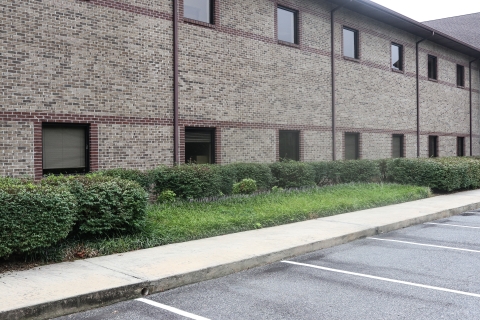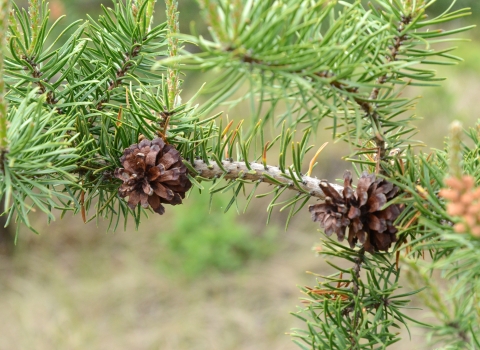Asheville, N.C. - The spring of 2020 is etched in the memory of all who experienced it, as the curtain of COVID descended, schools and offices closed, and many retreated to their homes and worked to make the best of interacting with the world via screens. There was much tongue-in-cheek commentary about how the natural world was healing in the wake of humankind’s retreat, however, that spring one tiny change was made at the U.S. Fish and Wildlife Service’s Asheville Field Office that has come to fruition for the benefit of bees, butterflies, and other pollinators.
Over a handful of weeks during that spring, Service staff stopped by the office individually and in small (socially-distanced) groups to pull monkey grass and burning bush shrubs, cut lingering root beds from the soil so they wouldn’t resprout, planted nearly 300 native plants representing 53 species, shoveled over 20 cubic yards of mulch, and even added hand-painted plant identification signs. The office also designed and added a water feature in a way that provides water to insects without being a breeding ground for mosquitoes.
Today, any given afternoon finds a steady stream of ruby-throated hummingbirds visiting the cardinal flowers, and myriad bee, bumble bee, butterfly, and fly species collecting nectar and pollinating flowers. Visitors to the building, which also houses the U.S. Forest Service, Appalachian Trail Conservancy, Natural Resources Conservation Service, and Farm Services Agency are often seen taking time to give the garden a closer look.
Service biologist Bryan Tompkins led the effort. As more pollinator species began to be considered for Endangered Species Act protection in recent years, Tompkins has taken a special interest in pollinator conservation, including working with solar power companies to incorporate pollinator plantings into their solar farms and helping found the North Carolina Pollinator Conservation Alliance. Tompkins coordinated staff efforts and worked with local nurseries Saturnia Farms and Carolina Native Nursery to supply the plants.
“As we see pollinator species become increasingly imperiled, part of the effort to conserve them is setting an example by using our space to support their conservation,” said Tompkins. “Hopefully we’ve created a space that will not only help pollinators, but also inspire others to take similar steps.”
Even in the gardens third year of growth, it has already provided numerous plants that have been used to supplement other pollinator habitat projects. As the garden continues to mature and the original plants spread and reproduce, Tompkins sees it becoming a source of plants for many future pollinator garden projects.











